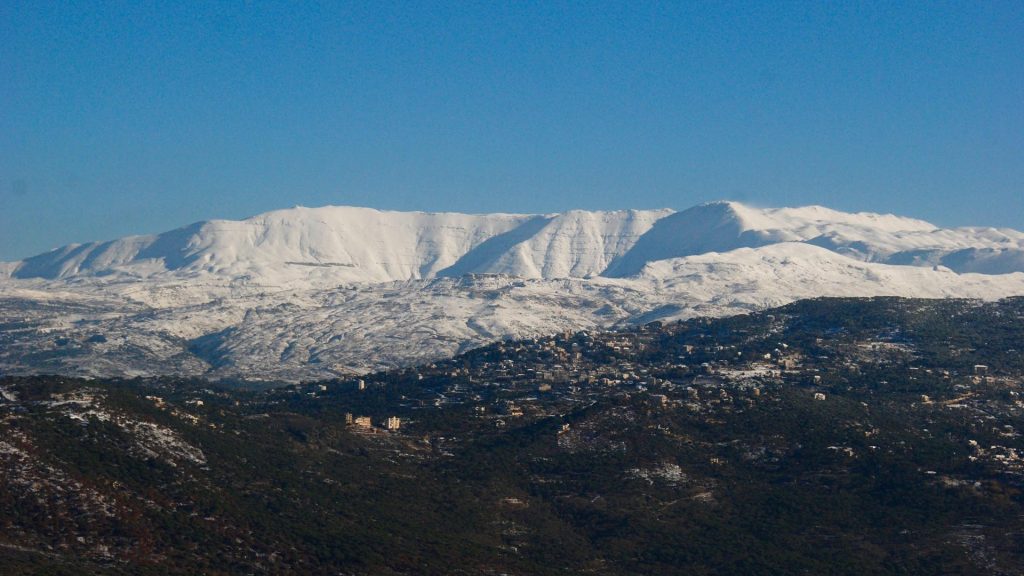When people think of the Middle East, images of vast deserts and endless dunes often come to mind. However, this region holds a wealth of natural beauty that defies these stereotypes.
From lush mountains and rolling hills to verdant valleys and dramatic coastlines, the Middle East is home to a variety of landscapes that surprise and enchant visitors.
Here are some of these unexpected gems:
Mount Lebanon in the Winter: A European Wonderland
Lebanon’s Mount Lebanon offers a striking contrast to the typical Middle Eastern desert scene. During winter, these mountains transform into a snowy paradise reminiscent of northern Europe.
Visitors traveling from Beirut will find themselves ascending from the Mediterranean coast to snow-capped peaks that feel worlds away from the bustling city below.
The Cedars of God, ancient cedar trees that have stood for a long time, add to the ethereal beauty of this region. Covered in a blanket of snow, Mount Lebanon offers activities like skiing and snowboarding, making it a winter wonderland that defies regional stereotypes.
Iraq’s Amadiya: A Historical Village Perched on a Mountain
Nestled atop a mountain in northern Iraqi Kurdistan, Amadiya is a picturesque village with a history that spans over 5,000 years. This enchanting location, believed to be the home of the Three Wise Men, offers stunning mountain scenery far removed from the typical desert landscapes associated with Iraq.
The village’s unique position and its blend of historical influences from Assyrians, Persians, Jews, and Christians create a captivating destination that challenges preconceived notions about the region.
The Green, Rolling Hills of Jazan: An Unexpected Oasis in Saudi Arabia
Jazan, located in the southwestern corner of Saudi Arabia near the Yemeni border, showcases a landscape that starkly contrasts with the country’s desert image.
Known for its terraced fields, amazing greenery, and even monkeys, Jazan’s mountain villages offer a serene escape from the arid expanses typically associated with Saudi Arabia.
The cultural influences from Yemen, evident in the local cuisine and traditional dress, further enrich the experience of visiting this verdant region.
Dhofar: Oman’s Coastal Green Jewel
Stretching from southern Oman to the Yemeni border, Dhofar’s coastline presents a dramatic departure from the stereotypical sandy beaches of the Middle East. With high cliffs, turquoise-blue waters, and pristine beaches.
The region experiences a monsoon season from July to September, transforming it into a green haven. Salalah, the main city in Dhofar, becomes particularly vibrant during this time, attracting visitors seeking refuge from the intense heat and humidity found elsewhere in the region.
Gebel Elba: An African Savanna in Egypt
Located in the southeastern part of Egypt near the Sudanese border, Gebel Elba is a protected area that offers an unexpected glimpse of African savanna landscapes within the Middle East.
This vast national park, covering over 35,000 square kilometers, is home to a diverse range of flora and fauna, including endangered species, coral reefs, and medicinal plants.
The area’s cool and humid climate, combined with its rich biodiversity and Bedouin culture, makes Gebel Elba a fascinating destination that defies the typical desert image of Egypt.
The Middle East is a region of immense geographical diversity that goes far beyond the stereotypical desert landscapes. By exploring these unexpected landscapes, visitors can gain a deeper appreciation for the Middle East’s unique and diverse environment.
WE SAID THIS: Don’t Miss…Geologist Uncovers Earth’s Oldest Life Forms On Saudi’s Sheybarah Island



